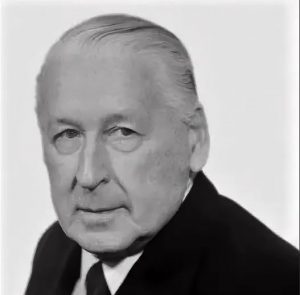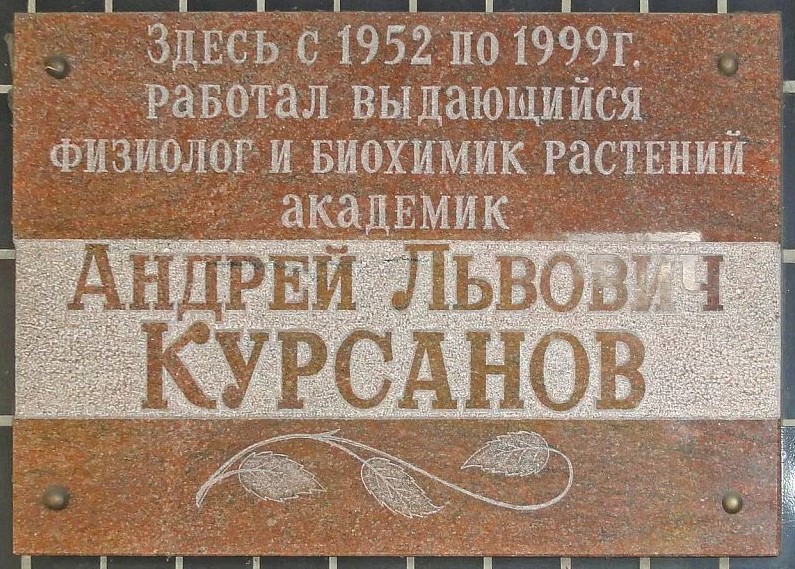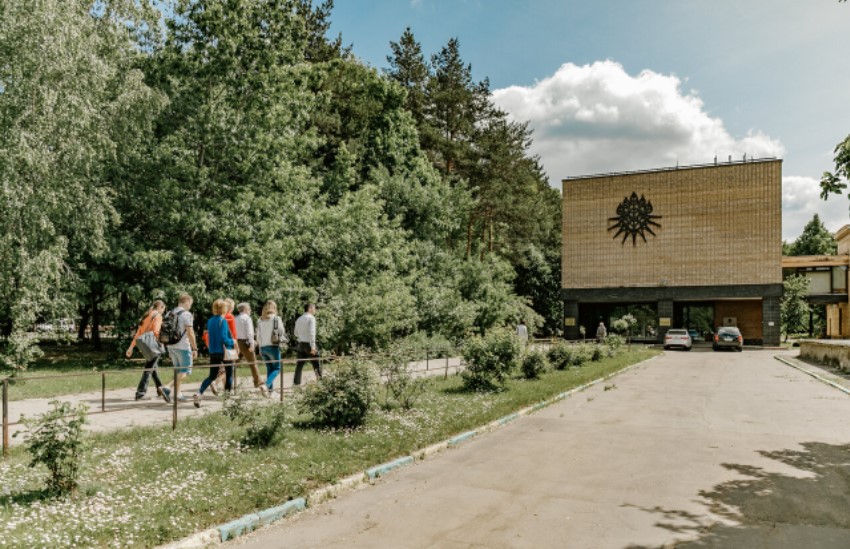Andrey Lvovich
Kursanov
1902-1999

Andrey Lvovich Kursanov was a scientist in the field of plant physiology and biochemistry, the Director of the Timiryazev Institute of Plant Physiology of the USSR Academy of Sciences, the Head of the Department of Lomonosov Moscow State University, an academician of the USSR Academy of Sciences. He was born on October 26 (November 8), 1902 in Moscow. He was a son of an outstanding Russian botanist, later professor of Moscow University Lev Ivanovich Kursanov (1877-1954). In 1926 he graduated from the Biological Department of the Faculty of Physics and Mathematics of Lomonosov Moscow State University. Since 1926, he was a postgraduate student at the Institute of Botany at the 1st Moscow State University under the scientific supervision of the outstanding Russian physiologist A.I. Oparin. From 1929 to 1934 he worked as a researcher, senior researcher, head of the sugar accumulation group at the Central Institute of the Sugar Industry in Moscow. Also, from 1929 to 1937 he worked at Moscow Agricultural Academy named after K.A. Timiryazev. He was an assistant, associate professor of the Department of Plant Physiology, where he began fruitful research work, first under the guidance of, and then jointly with A.I. Oparin. He conducted his main research in the field of plant physiology and biochemistry, enzyme biochemistry, synthesis and metabolism of carbohydrates and phenolic compounds. He developed the doctrine of the action of enzymes in living plant cells. He developed a fundamentally new doctrine on the movement of organic substances in plants and their deposition in reserve (transport of assimilators in plants). He found out the stages of the primary inclusion of nitrogen, phosphorus and potassium salts in the metabolism of absorbing root cells. In the 1930s, he worked a lot on the problems of applied plant enzymology, which is extremely important for the development of the domestic food industry. In particular, he studied the tannins of tea and other plants, discovered the properties of tea catechins to strengthen the walls of blood capillaries. He performed a number of studies on the biochemistry of tea production. Since 1934 he worked at the A.N. Bach Institute of Biochemistry of the Academy of Sciences of the USSR, first as a senior researcher, since 1935 as the head of the Laboratory of Enzymology (then the Laboratory of biosynthesis). He worked at this institute until 1954, fully concentrating on working there by 1937. During the Great Patriotic War, from 1941 to 1943, he was evacuated, headed the laboratory of plant raw materials and the laboratory of biochemistry and plant physiology, performed a number of important works of a defensive nature. Under his leadership, a technology for producing molasses from lichens was developed, a corresponding mini-plant was developed and assembled, then the production and operation of such plants, which were widely used during the war years, were established. In addition, for the first time in the USSR, he developed a technology for the industrial production of glucose from lichens (together with N.N. Dyachkov), which was also widely used in industry. From 1951 to 1953 he was the Deputy Director, in 1952-1954 he was the head of the laboratory of the A.N. Bach Institute of Biochemistry of the USSR Academy of Sciences again, in 1941-1954 he was also a professor at V.I. Lenin Moscow Pedagogical Institute. From 1952 until the end of his life he worked at the Timiryazev Institute of Plant Physiology of the USSR Academy of Sciences: for 37 years, until 1989, he was its director, and from 1954 to 1999 he was the head of the laboratory of the movement of substances. Continuing his active scientific work, he developed methods for determining enzymes in plant tissues, on the basis of which he studied the action of enzymes in plants depending on their physiological state and environmental conditions. He discovered the P-vitamin activity of catechins, organized biochemical control of their production. He developed the technology of industrial production of vitamin R. He discovered the biological activity of catechins (1961). He studied the biochemistry of plant root nutrition – root metabolism in connection with the primary assimilation of ammonium, phosphorus and potassium ions. He developed the theory of the circulation of substances through the roots of the plant to all its organs. He achieved the most significant results in the field of research on the movement of substances in plants, their use and storage. For his great achievements in the development of Soviet science, by the Decree of the Presidium of the Supreme Soviet of the USSR dated March 13, 1969, Academician Andrey Lvovich Kursanov was awarded the title of the Hero of Socialist Labor with the award of the Order of Lenin and the Hammer and Sickle gold medal.
Address: Moscow, Botanic str., 35, p. 2

